In the third article in IBC365’s ‘Spotlight on’ series about jobs influenced by technology, mobile journalists from CBC, RTÉ and the BBC offer insight into how smartphones have revolutionised reporting.

Sarah Leavitt Canadian Broadcasting Company (CBC)
Sarah Leavitt started her career in print but moved into broadcasting when she started working for the CBC seven years ago. She worked in radio, producing for a current affairs shows and radio reporting but for the past two years has been working mostly as a video journalist, working for all three platforms of web, radio and television. For the past year, she has been focussing on mobile journalism (MoJo).
What is your definition of a MoJo? What skills do you need and what does your job involve on a daily basis?
A MoJo is a journalist who relies entirely on their phone to conduct their craft. With a few extras in their kit, they shoot and edit an entire television report all on a phone.
First and foremost you need to be very comfortable using a phone. You also need to be familiar and skilled with the various apps a MoJo uses, as well as the different hardware in your kit.
It helps to have experience as a video journalist. Not only to be able to set up an interview and a scene but also to know what shots to take and how to edit.
A MoJo is entirely self-reliant. I go out and shoot an interview, write the script, my editor will vet the story and I complete the edit on my phone. I need to send the packaged back in time for the six o’clock show.
What’s in your kit bag?
- An Apple iPhone 6 with battery pack case
- Bose shotgun microphone
- Macgyvered rig put together by our equipment manager, it includes a cellphone mount and screws
- Lightweight tripod and monopod
- Filmic Pro app for shooting
- iMovie and or Lumafusion for editing
CBC is still relatively new to adapting to MoJo, there are only a handful of people in each station across the country who do it. So with technology always changing, I heavily rely on getting the advice of the people who taught me as well as others, including Marc Blank-Settle (BBC), Philip Bromwell (RTÉ) and Glen Mulcahy (ex- RTÉ).
I follow other MoJo reporters on Twitter and see what their kit is made up of. A lot of the time, they inform me of new apps or updates to old ones that actually provide more options, whether it be stabilisation or editing capabilities.
Does this style of reporting pose a threat to traditional camera operators?
If you have the right kit, a phone can almost entirely replace a camera, depending on the shoot. The quality of picture is not at risk, many new phones now can shoot in 4K. Audio can be the trickier one but is not compromised if you have the appropriate microphones at your disposable.
I find, even with tools and apps, the phone is very limited when it comes to getting good shots of a place or scene where you can’t get up close.
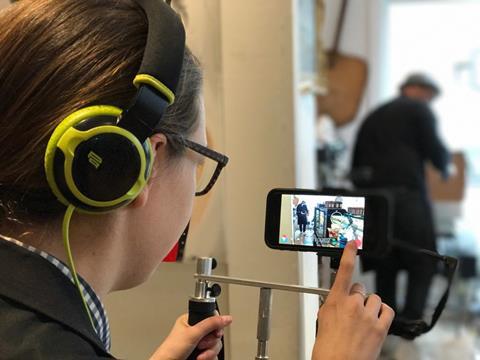
What technical challenges are you faced with?
Based in Montreal, I have to deal with very cold weather. When it gets below 10 degrees Celsius, the phone is very quick to drain its battery. I try as much as possible to avoid outside interviews but sometimes it’s near impossible.
Another challenge is that people may have preconceived notions of what a professional journalist is or what tools they use. So, it can be hard sometimes to convince people that you are indeed a professional tv reporter. However, there is a positive side to that too.
What technology trends do you expect to change your role over the next five to 10 years?
Technology changes so quickly today that it’s hard to know how the role will change. Mobile journalists aren’t actually that well known in Canada and I expect we’ll be seeing more of them in the coming years.
In the near future more of my stories will be produced using my phone but also remaining open to new technological changes and learning new tools.
What is the most challenging aspect of working as a MoJo?
Often convincing people I am a professional journalist. I’m often showing off my kit and the tools I use as well as my results. Most of the time people are curious to see what it is I’m doing and the results that come from it. I do have a professional microphone and rig so it does help to see there isn’t just a phone at work.
I cover a feature called “streeters”, commonly known as vox-pops, asking the public on the street to weigh in on a subject. When I’m doing it with a camera and a microphone with CBC branding, people usually don’t have a problem stopping. When I’m doing it with my MoJo kit, they mistake me for a charity worker or even a student.

Eleanor Mannion RTÉ
Mannion graduate from Dublin University with a degree in multimedia studies where she focussed on storytelling with a passion for innovating and experimenting with Adobe and Flash. She joined RTE in 2006, initially in the newsroom as part of the production team for the TV bulletin but decided to pursue editorial and focus on video journalism. Mannion was the first RTE “digital ninja” MoJo that was commissioned and published an entire documentary created on the iPhone for TV broadcast.
What does your job involve on a daily basis?
At RTÉ we have a social and digital team led by Philip Bromwell, with four mobile journalists. We film our own material that will work for social sharing, as we are digital first, we create our stories with the digital platforms in mind. The ethos of our reporting is defined by what our audience want with the focus of giving someone a voice.
Each day can be very different, we film and edit autonomously. Usually I spend a day travelling and filming, the next day editing and the following morning repurposing for TV. We always publish at lunch time because it’s always been very successful for engagement.
Social media audience attention span is fleeting especially in the news feed, so a focus on strong visuals, strong lead and a call to action receives the best engagement results.
I also find it really crucial to learn why a story didn’t catch on for example was the grab not strong enough or was the hook 10 seconds in, it can be tough but valuable to learn from for next time.
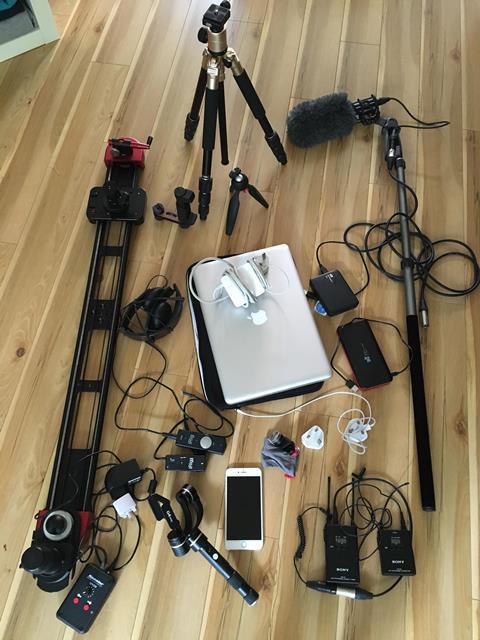
What’s in your kit bag?
I use an iPhone 8 Plus with the maximum storage, because storage is key as is a battery pack.
I also use a tripod, shoulder pod, shorter tripod for smaller spaces and a light which is battery operated. I have a variety of radio microphones and a stick microphone, gimble, which I am a big fan of when it is necessary.
The two main apps I use are Lumafusion and Filmic Pro. They’re comprehensive, which allows you to change the frame rate amongst other aspect ratios. You can set your focus and exposure separately, pull focus on it as well as zoom, making it really quick and easy to use. You can also tint and load features and adjust iOS, which achieves an amazing broadcast quality.
I also use Spark Video, Adobe and Prisma for applying sensors to videos. It requires little effort and has high production values including anime, and pop colours, which actually looks like a lot more effort than it is.
What impact has technology had on your role?
The smartphone changed everything, it’s the only reason MoJo is possible. App developers have a lot to be credited for in the development as well.
Today we are experimenting with new apps which can change our workflow and enhance our stories, the apps are innovating and have not been developed with broadcast in mind.
What is the most challenging aspect of working as a MoJo?
I find the fact you are a one-man band amazing but also tough. I’ve learnt things for the first time, like the power of wind tampering with tripod. I made mistakes with light, not enough on the subject as well as audio issues.
When I started as a MoJo in 2014 it was taboo, the biggest challenge was coming up with a workflow for data management and data wrangling because it was all so new. Media management of it all would be the thing you need to have clearly organised and set out a workflow.
At the start I kept it simple and have become more ambitious for the visual storytelling. I find it incredibly rewarding experimenting and innovating on editing and shooting and go after the bigger stories.

Does this style of reporting threaten traditional camera operators?
The fear and scepticism is gone because we can happily coexist. Often the output can compliment rather than replace traditional reporting. I wouldn’t be sent down to interview the Prime Minister because you want a journalist with a TV crew so they can focus on audio and video.
Our primary medium is for social and then repurposed for TV, which has highlighted how MoJo is not a threat to traditional broadcast journalism.
What technology trends do you expect to change your role over the next five to 10 years?
The audience is everything. We are constantly responding to the audience, who they are and what they are watching and the different ways they are consuming news. One day it might be on Snapchat and the next on Instagram. The audience is key to how we do our job, that is the biggest evolution.
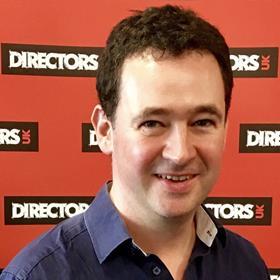
Dougal Shaw BBC
Dougal Shaw is a video journalist with the technology and business news team at the BBC. He started out at the BBC as a researcher and then a producer on the Hardtalk programme but realised he wanted to film and edit his own work pursuing the career as a MoJo. He has spent the last two working as a MoJo for World Hacks. Shaw finds the best advantages of reporting as a MoJo in the unusual angles and capturing intimate and honest interviews.
What skills do you need and what does your job involve on a daily basis?
I make original short-form films for a strand called World Hacks about once every three weeks. I need to pitch original ideas and get them commissioned. For each film I will do multiple re-edits for Facebook, Instagram and television news channel packages, which can be time consuming, but means you reach a large and diverse audience.
As a video journalist at BBC Current Affairs, I am embodying several traditional roles: producer, camera operator, editor and reporter. It’s a role of exhilarating freedom because of the incredible potential of the little mobile device and the way it has revolutionised our workflow.
You need a mixture of hard and soft skills. Hard skills being the basics of video journalism, to record an interview, capture a range of shots and build your story in the edit.
The soft skills are equally important. You have to be open-minded, adaptable, sensitive to your subjects and resilient. It’s hard working on your own, but even while looking after all the practicalities of filming, you need to make sure your subject is happy and listen out for clues that will help you tell a powerful story.
What is in your kit bag?
- iPhone 8 Plus for filming, which I keep in an iOgrapher rig, this allows me to go handheld or attach to a tripod.
- Filmic Pro app for filming, with the cinematographer in-app purchase so you can shoot in Log Mode
- Lumafusion and iMovie apps for doing short edits on my phone for immediate social media publication
- Final Cut X on my MacBook to edit my main features on
- Rode iXLR adaptor so I can connect my Audio Technica microphone to my iPhone’s lightening port and monitor sound on headphones
- Manfrotto Compact tripod
- Osmo Mobile gimbal for when I want some stylised smooth shots through an interesting location
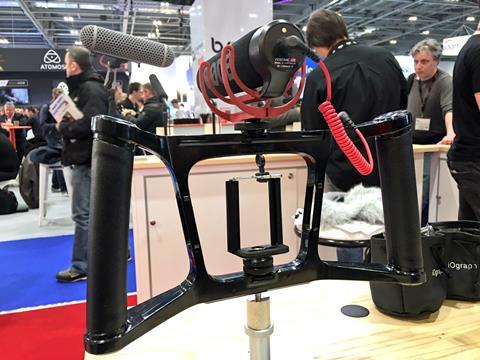
What impact has technology had on your role?
The creative opportunities are fantastic because you can get shots from unusual angles using the phone. Time lapse, slow-motion and selfie-filming are new possibilities which have emerged and changed the way we produce stories.
You can also do things the traditional social functions such as going live from location on Facebook, or start uploading the best shots from your rushes straight to Twitter or Instagram, to start promoting interest in your film even before it’s finished. Subjects are more at ease with phones and give better interviews.
Does using a mobile device jeopardise the quality of picture and audio?
The video quality is certainly not a problem. Even on my old iPhone 6 I could shoot 4K, which is a way higher spec than I need to deliver to TV news channels. I film in HD which is fine and most of the time I just use available light. I find the iPhone handles it well.
Sound is more likely to be the problem. The native microphone on the phone is not good enough for interviews or general atmosphere, although it is actually very good for recording voice track on news packages, working like a lip mic.
However, once you’ve connected a good microphone to your phone, you have no problem. I use either the Rode iXLR adaptor to plug in an XLR mic, or I might use a Rode Lavalier tie mic, or Rode VideoGo gun mic.
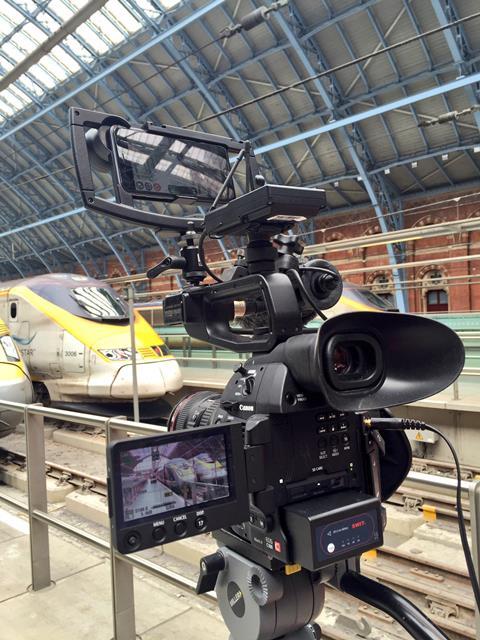
Does this style of reporting threaten traditional camera operators?
Traditional camera crews are not threatened because they remain the masters of their craft. BBC News is doing an experiment at the moment with UK newsgathering crews, where they are using smartphones. Their output has appeared on national TV news bulletins and you would struggle to notice the difference, because they were shot by experts.
The explosion of online content means there is a huge demand for video, demand outstrips supply. MoJo reporting can help to meet some of that demand. I don’t think MoJo will replace dedicated broadcast cameras for many deployments.
What is the most challenging aspect of working as a MoJo?
From a technology perspective, you are basically hacking a phone, to make it do a job it wasn’t designed to do full-time, which is perform as a broadcast camera. Sometimes things will go wrong and you have to keep cool and adapt to the circumstances.
In my early days I lost some footage because I forgot to go into airplane mode before filming - if you don’t do this you can suffer sound interference with some microphones. Battery life can also be a problem.
Read more Spotlight on: UAV Operators
























No comments yet